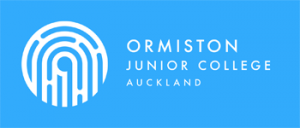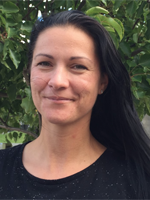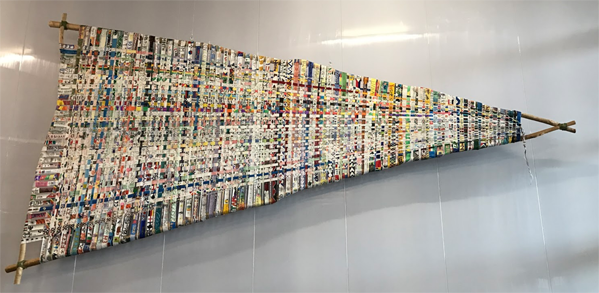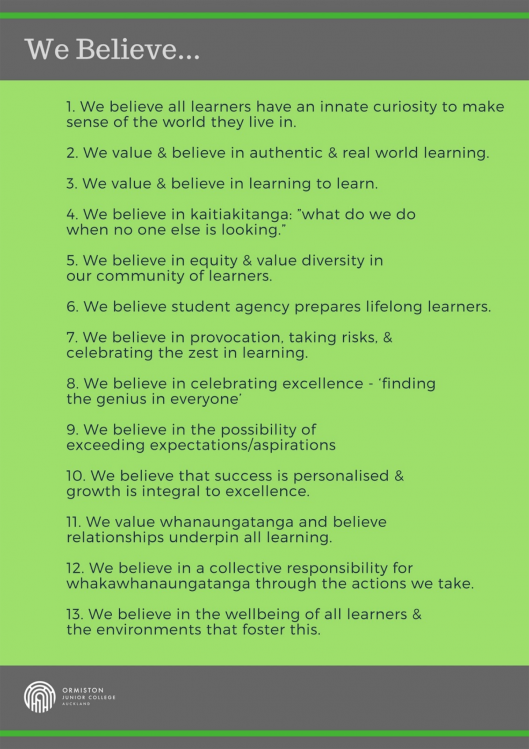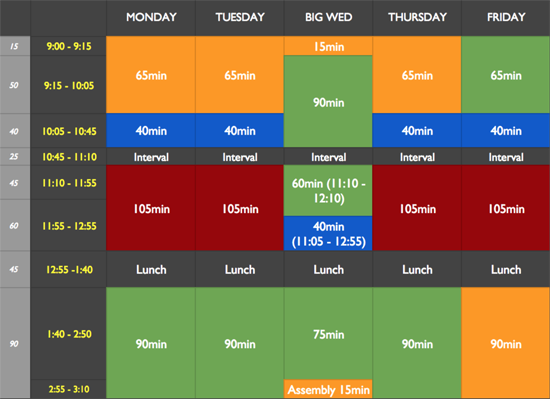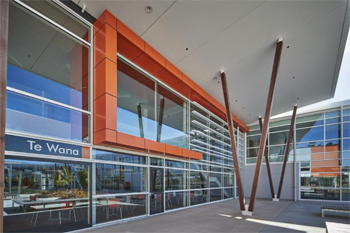Ormiston Junior College opened its doors to 171 Year 7–10 foundation students in February 2017. It draws from the surrounding new housing area, which is still growing into a newly established multicultural community, mostly comprising of Pasifika and Asian families.
Kat B. Liu-Asomua, Associate Leader of Learning at Ormiston Junior College shares the school’s journey to design their graduate profile badges.
Our graduate profile took root long before the students arrived. The senior leadership team, led by principal Luke Sumich, realised the need for an identity of “who we are and where we come from”. Not an easy task when the community is still forming. We don’t know exactly who they are or where they come from.
We formed the narrative with the local iwi, Ngāi Tai ki Tāmaki, who gifted names of their tupuna. For example, Te Wana Hui Kainga Hui Tangata, our school gathering space, is named after a Ngāi Tai chief who gathered his people together. Ours is a growing evolving story, working in partnership with the kura and the community.
We went out to search for more feedback. We asked education experts, “If you were in our shoes what would you say was important?” We took the essence statements of The New Zealand Curriculum and we used the front end to unpack what we believe about learning. We read and were influenced by Key Competencies for the Future. Nathan Wallis reminded us about mindfulness and daily physical activity (not PE) for growing brains to work properly and the importance of identity (whakapapa) in developing a sense of self.
We took Dr Julia Atkin’s Values and Beliefs About Learning to Principles and Practice and worked through the activities. We asked ourselves, “If you were a learner at OJC what should you be leaving with?”
We started with the community. Next we talked to staff at the senior college and the primary next door, and then with the establishment board. When the teachers came on board, we spent time on extensive relationship building because collaboration is important. We had lots of learning conversations to unpack what we believe about learning.
Ormiston Junior College – Beliefs about learning
Community voice
The New Zealand Curriculum encourages schools to seek out and listen to the ideas of students, parents, whānau, and the wider community when designing their local curriculum. Ormiston Junior High School used the voices of their community to create their 'beliefs about learning'. This ensured a collective vision that was owned by all stakeholders.
Our next problem was how to write this into a graduate profile. How do we write up something aspirational into something that is also achievable?
What does it look like in year 8 and in year 10? We found that it was almost indistinguishable between the two levels. There was much arguing while at the same time, making worthwhile connections.
We aligned our ideas with our school values:
Hauora – Wellbeing
Whanaungatanga – Relationships
Auaha – Innovation
Ngakau Tapatahi – Integrity
Wana – Inspiration
Hiranga – Excellence
Ormiston Junior College – Values
 Ormiston Junior College – values (PDF, 1 MB)
Ormiston Junior College – values (PDF, 1 MB)
Running parallel to this is our Transdisciplinary Authentic Inquiry Projects which we refer to as AIP. We wanted to keep ourselves honest and think into the 21st Century, constantly evaluating where we’re at so AIPs remain dynamic. We wondered, is there a way to track kids individually if they are covering different curriculum areas?
In the process we’ve worked on creating a graduate profile that helps us, our community and our learners, to make explicit our school values in action in a transdisciplinary curriculum approach. There was no model to work from. However, the idea of earning badges came from the Chicago City of Learning. I saw a lot of potential in digital badges. Half of our timetable is devoted to Authentic Inquiry Projects, which are cross-curriculum and multidisciplinary. Whatever assessment we came up with had to be sustainable for teachers and students. Including narrative and gamified elements seemed to be the answer.
A day in the life at OJC
We decided on three descriptors for assessing the criteria for graduate profile badges loosely based on SOLO descriptors, but simplified to:
- Emerging – I am developing an understanding in this context
- Effective – I consistently show my understanding in more than one context
- Exemplary – I consistently show a deeper understanding and can apply and share this in this context
Students are able to set goals and bid for badges for their assessment. They self assess and are encouraged to track their learning journey, which is put together with the help of a template that their teachers work through with them in Friday AIP sessions. When students feel they are ready to bid for a badge they advise their learning advisor and their mentor advisor coach (MAC). Many students come at the end of the term to put in a bid but they can come at any time. The student stands in front of their MAC group (10–15 students) with their props and then they are questioned by the group. Discussions are quite dynamic. Evidence is accepted from outside school too, voices can be captured on video. Students have to demonstrate their learning and they learn to be smart about how they bid. They also learn about giving feedback to others. Students cannot get an exemplary badge without demonstrating it across the curriculum learning areas. Double dipping is encouraged, we call it "hacking your curriculum".
What was surprising to me was that the students could identify other learning areas they had not targeted and are therefore able to set their next steps. The process, which I call “assessment as learning”, gives students other ways to demonstrate their learning. At the beginning of the year it set the processes for students to talk about their learning. Students are now able to navigate their learning. To begin with they were inclined to underestimate themselves and bid for lower than they could achieve. They have learned to keep artefacts such as photos and video and record steps of their journey. Students are directing their learning, selecting badges based on goals they have set with parents and teachers. They set out what they will try to do each term and how many badges to go for. Students are able to show their learning in a way that makes sense to them.
Older students were wanting teachers to assess them at first. They felt uncomfortable with self assessment. It’s hard at first but it forces students to think about their achievements. It can be quite difficult for some students to talk in front of others but there are many ways they can present their learning.
“At first doing the badges was tricky until we had a go and saw how other students were bidding, completing the criteria and leveling up their badges. By the end of the first year, I can see how using the badges forced me to think about my learning and plan to meet goals and criteria each week to put together great bids. Watching and helping to decide the level for the other kids’ badges in my MAC was also great learning for us all, and we can all see our strengths and help each other improve and meet criteria in ways that work for each of us.”
The learning journey is also used for reporting to parents. As teachers do badge assessment in class time with students it’s not in their own time after school. Teachers spend less time in assessing but their assessments are more frequent. Everything happens in the class with the students and students can ask to be assessed at any time. Every teacher puts in a whole day to focus on students’ presenting their learning in a panel discussion to help them prepare for their bidding session for their badges.
The following is an exemplar from the first year of bidding. This student used an ebook format to embed a range of evidence and reflections including videos and sound bites in order to demonstrate her ability to meet the badge criteria she had selected. She presented the ebook to the class and discussed and defended her evidence while her peers and teacher asked questions about her thinking.
The community finds it difficult and doesn’t quite understand it as assessment yet. Since we were still finding our way in 2017, we didn’t prioritise unpacking this for them initially. We will be presenting this in more detail to whānau this year.
Parent of Year 9 learner:
“I’m still learning how this type of assessment works, but I see how my daughter has to prove what she knows and how she uses her learning in different situations and classes and projects. For me, next I need to know how to support her with this ongoing learning at home.”
Effective assessment and the learning to learn principle
Students at Ormiston Junior High School are key players in the assessment process. They discuss, clarify, and reflect on their goals, strategies, and progress with their teachers, their parents, and one another. This develops students’ capacity for self- and peer assessment, which in turn helps them "learn how to learn."
What are our next steps?
We’re excited about what we are trying to do. This doesn’t mean we have it perfect yet though. Our Jr Graduate Profile Badges and Sr Graduate Profile Badges are a work in progress. But, after just one year, we’re proud of where we have started and how it’s still evolving. We have 27 staff currently but we will have around 90 in about five years, so we’ll continue perfecting it.
Our graduate profile provides opportunities for learners and the community to reflect on how to meet the criteria in a variety of settings and experiences. We will continue asking ourselves “are we reflecting properly?” We will buddy support new teachers throughout 2018.
Advice to schools wanting to create a graduate profile
Don’t underestimate the power of making immersive assessment experiential for both teaching teachers and teaching students how to do it. It is innovative and the first time may not be awesome. It will get better and richer every time you do it. Approach it with that mindset.
If it’s a real graduate profile, it has to be living. It can’t just be words on a bit of paper in a prospectus. For us it’s connected to everything we do in our learning. It’s very much a living breathing thing.
We’d love to have feedback on our journey so far.
You might like ...
Graduate profiles – a vision of future-oriented learners
Graduate profiles are one way that a school can communicate a shared understanding of what a future-oriented learner looks like.
Making it our curriculum
Matakohe school worked together as a community to redesign their school curriculum. Through listening to the values and aspirations of everyone, they have developed their own graduate profile with a set of competencies for all students to work towards.
- Tags:
- assessment
- community engagement
- curriculum design and review
- secondary
Return to top

